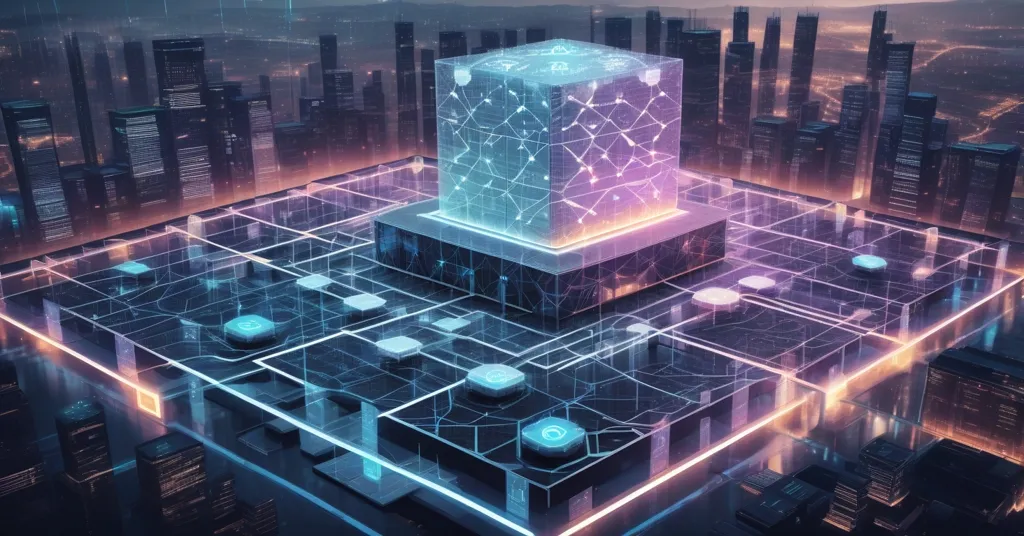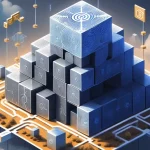Anthropic’s $50B Google Deal: AI Compute Powerhouse with Blockchain Impact

Anthropic’s $50 Billion Google Deal: A Compute Colossus with Blockchain Implications
Anthropic, the AI innovator started by former OpenAI researchers, has just locked in a staggering agreement with Google Cloud, securing access to 1 million Tensor Processing Units (TPUs) and 1 gigawatt of compute power by 2026. With infrastructure costs estimated at $50 billion, this deal isn’t just a milestone for AI—it’s a signal of how massive tech investments could ripple into the world of blockchain and decentralization, for better or worse.
- Massive Scale: Anthropic gains 1 million TPUs and 1 gigawatt of compute power, costing around $50 billion.
- Strategic Diversity: Leverages Google TPUs, Amazon Trainium chips, and Nvidia GPUs for varied AI workloads.
- Revenue Surge: Boasts a $7 billion annual run rate, with Claude Code hitting $500 million in just two months.
Unpacking the Compute Behemoth
Let’s break down what this deal entails. Tensor Processing Units, or TPUs, are Google’s specialized hardware designed to turbocharge machine learning tasks—think of them as the high-octane engines powering AI models like Anthropic’s Claude. Securing 1 million of these, paired with 1 gigawatt of compute power (enough juice to run a small city), is a bold move through a massive deal with Google for advanced compute resources. To put the $50 billion cost into perspective, that’s akin to funding 50 major sports stadiums—$35 billion of it just for the chips. This isn’t a minor upgrade; it’s a full-on bet that raw processing strength will define the next era of tech dominance.
Anthropic’s playbook stands out for its refusal to bet everything on one tech giant. They’re spreading their workload across Google’s TPUs for certain operations, Amazon’s Trainium chips for others, and Nvidia’s GPUs for specialized tasks like training AI models (teaching them with vast datasets) and inference (real-time decision-making). This multi-vendor, multi-cloud setup is like not putting all your money on one horse—it slashes costs and dodges disaster if one provider stumbles. Proof of this came during a recent AWS outage when Claude stayed online, thanks to this diversified backbone. For a field as cutthroat as AI, that’s not just clever; it’s survival.
Amazon, holding the biggest stake in Anthropic with an $8 billion investment compared to Google’s $3 billion (including a $1 billion boost in January), isn’t playing second fiddle. They’ve custom-built Project Rainier, a supercomputer for Claude using Trainium 2 chips, to maximize efficiency and keep compute costs from spiraling out of control. Analysts peg Anthropic’s contribution to AWS growth at 1-2 percentage points in late 2024 and early 2025, with expectations it’ll jump past 5 points by late 2025. Meanwhile, Anthropic’s revenue is skyrocketing—nearing a $7 billion annual run rate with over 300,000 businesses using Claude, a 300-fold leap in two years. Their latest product, Claude Code, raked in $500 million in annualized revenue in just two months, making it their fastest-growing offering ever. That’s not growth; that’s a damn freight train.
Industry leaders are weighing in on the significance. Anthropic’s CFO, Krishna Rao, underscored the partnership’s depth:
“Anthropic and Google have a longstanding partnership and this latest expansion will help us continue to grow the compute we need to define the frontier of AI.”
Google Cloud CEO Thomas Kurian highlighted the practical edge of their hardware:
“Anthropic’s choice to significantly expand its usage of TPUs reflects the strong price-performance and efficiency its teams have seen with TPUs for several years.”
Scott Devitt from Wedbush, speaking to CNBC, pointed to the downstream effects:
“Once Claude becomes standard for enterprise devs, it directly pushes up AWS revenue… that dynamic could drive Amazon’s cloud growth for many, many years.”
AI Meets Decentralization: Opportunities and Parallels
While this deal is rooted in AI, its implications stretch into the realm of blockchain and decentralization—a core concern for Bitcoin maximalists and crypto enthusiasts. The sheer scale of compute power here could, in theory, fuel breakthroughs that intersect with decentralized tech. Picture AI models optimizing Bitcoin transaction speeds by predicting network congestion, or enhancing privacy protocols with smarter encryption methods. Imagine decentralized finance (DeFi) platforms using AI to detect fraud or automate complex smart contracts with pinpoint accuracy. These aren’t pipe dreams—AI and blockchain synergy is already being explored in fintech, and Anthropic’s compute arsenal could accelerate those experiments.
There’s a lesson in resilience here too. Anthropic’s multi-vendor strategy mirrors a growing need in crypto to avoid single points of failure. Just as relying on one exchange or blockchain can spell disaster (think Mt. Gox or Solana outages), crypto infrastructure could benefit from spreading risk across providers or hardware setups. If Bitcoin nodes or mining operations leaned on diversified cloud systems, they’d be harder to censor or disrupt. Anthropic’s approach isn’t just a business tactic; it’s a blueprint for building systems that don’t crumble under pressure.
Historically, tech giants wielding outsized power—whether in compute or finance—have clashed with the ethos of decentralization. Bitcoin emerged to challenge financial gatekeepers, and AI at this scale could either bolster that fight or become another centralized chokehold. If harnessed with open-source principles, gigawatt-scale compute could empower decentralized networks, perhaps by running simulations to improve consensus mechanisms like proof-of-work or proof-of-stake. But history warns us: unchecked power often consolidates. We’ve seen it with banks, and we see it with exchanges. Could AI be next?
The Dark Side: Centralization and Sustainability Risks
Let’s not sip the Kool-Aid without a reality check. A gigawatt of compute power is an energy hog—data centers at this scale can strain national grids, much like Bitcoin mining has drawn flak for its environmental footprint. Reports suggest AI data centers could soon rival crypto mining’s energy draw, which already accounts for roughly 0.1% of global electricity use. Both fields face the same looming question: how do you innovate at breakneck speed without torching the planet? Governments and activists are already eyeing tech’s carbon footprint, and dual scrutiny on AI and Bitcoin could spark regulatory headaches.
Then there’s the specter of market dominance. Google and Amazon pouring billions into Anthropic isn’t charity—it’s a play to cement their grip on cloud computing and, by extension, AI development. If Anthropic becomes overly reliant, these giants could steer innovation in ways that clash with decentralization ideals. Picture a scenario where Google pushes proprietary AI standards that lock out smaller players, much like centralized exchanges often dictate crypto market dynamics. For Bitcoin purists, this should raise hackles. Tech concentration risks creating new overlords, and while Anthropic’s growth embodies effective accelerationism (pushing progress at full throttle), it’s a double-edged sword.
On the flip side, this kind of audacious scaling is exactly what disruption demands. Bitcoin didn’t upend finance by playing it safe—it took raw grit and infrastructure to challenge the status quo. Anthropic’s focus on execution over hype is a breath of fresh air compared to the vaporware peddled in both AI and crypto circles. No empty promises, just results. If we can steer these compute juggernauts toward open, decentralized goals, the payoff could be monumental—think AI-driven tools that make blockchain accessible to the masses or cut mining energy waste. The trick is keeping the power in check.
Key Questions and Takeaways
- How could Anthropic’s Google deal influence blockchain innovation?
This $50 billion investment in compute power might speed up AI tools that optimize blockchain functions, like smarter smart contracts or enhanced privacy in DeFi, though concrete applications are still on the horizon. - What can crypto infrastructure learn from Anthropic’s diversified setup?
Crypto projects could mirror this multi-vendor approach, using varied cloud or hardware systems to boost resilience against outages or censorship, akin to avoiding reliance on a single exchange or network. - Does gigawatt-scale AI compute threaten decentralization in tech?
It risks entrenching power with giants like Google and Amazon, echoing crypto’s battles with centralized exchanges, yet it could also fuel decentralized innovation if guided by open, community-driven values. - Can AI’s enterprise success, like Claude Code, parallel blockchain adoption?
Yes, Claude Code’s $500 million revenue spike in two months shows how fast practical tech can scale in business, signaling a similar path for blockchain solutions if they prioritize usability and real-world value.
Looking Ahead: Power, Progress, and Principles
Zooming out, Anthropic’s calculated ascent—balancing explosive growth with pragmatic strategy—offers a roadmap for tech disruptors navigating uncharted territory. Their $7 billion revenue run rate and enterprise traction aren’t just numbers; they’re proof that transformative tech can deliver tangible impact. Yet, as we champion this kind of bold acceleration, we’ve got to stay sharp on the trade-offs—energy demands, market monopolies, and the ever-present tug-of-war between centralization and freedom. This story isn’t about Bitcoin directly, but its undercurrents of challenging norms and building antifragile systems resonate deeply with the crypto spirit. So, here’s the lingering thought: will AI’s compute race empower the decentralized future we’re fighting for, or build new cages we’ll have to break? The next decade might hinge on that answer.



